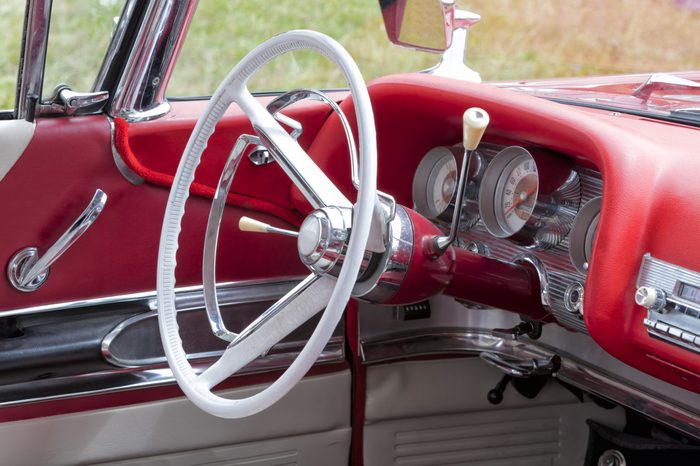
Ever-evolving design
If it’s a been a while since you’ve shopped for a new car, the array of features and options can be dizzying. Rear-view cameras, safety sensors beeping, and large glass screens displaying navigation and music information are features that weren’t on anything but dream and concept cars just a few years ago. “Car design evolves with the needs of the customer,” shares Darren Palmer, Ford’s global product development director for battery electric vehicles. “Today your phone is your key, audio player, map, direct line to roadside assistance. As technology plays more roles in our lives, it frees up space inside the vehicle and gives automakers like Ford the opportunity to design with new rules.” As the old makes way for the new, the following items are quickly becoming things of the past. You’ll also want to know the things you’re doing to your car that mechanics wouldn’t.
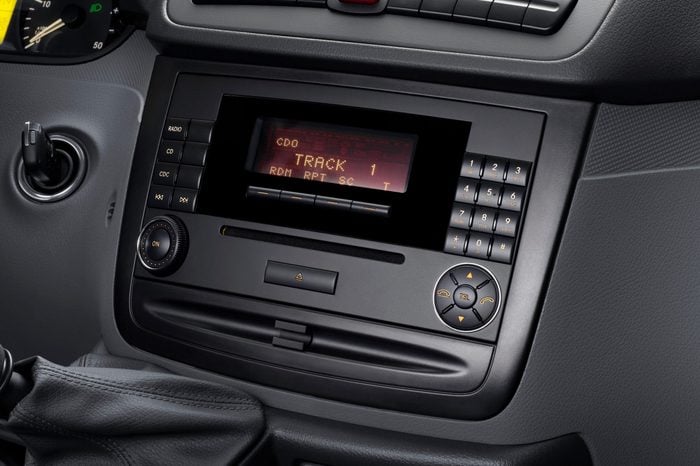
Cassette players and CD changers
With the ubiquity of satellite radio and streaming audio, physical media has been relegated to dusty shelves in the basement. While there is certainly a nostalgic element to the act of pushing a favorite mixtape into the dashboard, or selecting the six best CDs for a long road trip and sliding them into a cartridge in the trunk of the car, the convenience of thousands of songs, engrossing podcasts, or unputdownable audiobooks makes digital media the choice for most new car buyers. Very few new cars even have a CD slot these days—many will have multiple USB ports instead. Besides, Millennials will never use cassettes, like many other once-common items that have been rendered relics. Check out the most popular car the year you were born.
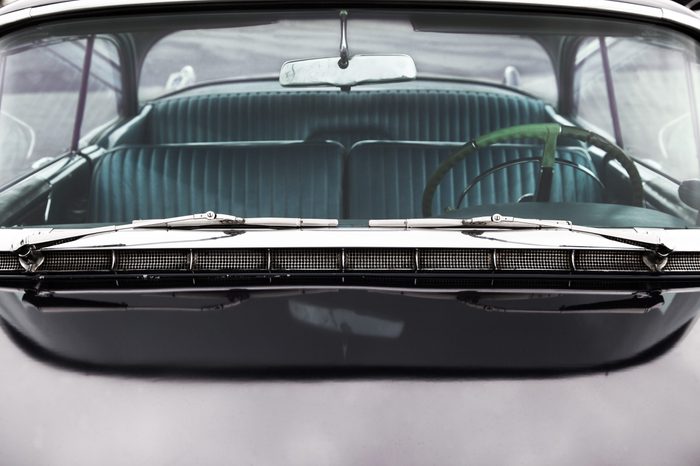
Front bench seats
Bench seats were the standard of most family cars through the 80s, though a couple of cars (notably the Chevrolet Impala and Toyota Avalon) retained a three-across seating option into the early 2000s. That middle seat was never the most comfortable—it was typically narrow, causing elbows, shoulders, and knees to rub—though some drivers enjoyed the extra room (sans the third passenger) to spread their knees. Others might be nostalgic for the cozy confines of a bench seat on date night, where a loved one can slide closer to the driver.
Safety is the primary reason bench seats have been relegated, as airbags tend to work best when directly in front of the passenger, and it was nearly impossible to fit an airbag for that center seat right where the radio would go. Find out the 16 car safety features no vehicle should be without.
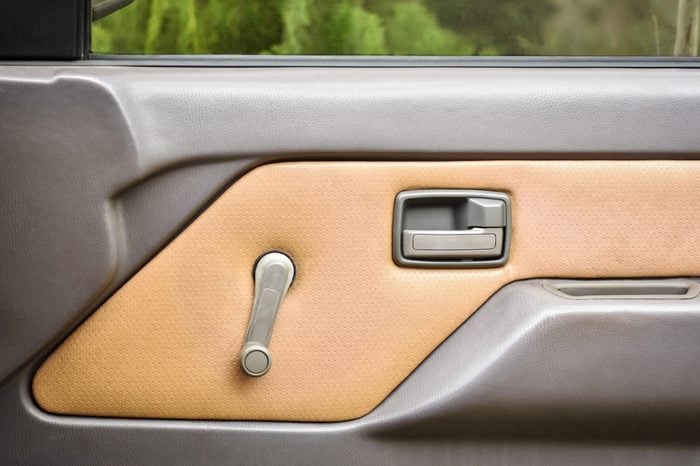
Wind-up windows
Classified advertisements for used cars used to highlight the expensive options fitted to a car in an effort to make it sell. Power windows, power door locks, and air conditioning were all features that once cost extra. Manual, wind-up windows have disappeared—and good riddance! Never again will drivers know the struggle of reaching across the car to raise windows while driving in a sudden rainstorm. A press of a button opens or closes everything.
In this case, manual windows are obsolete due to modern manufacturing efficiencies. It’s much easier—and thus much less expensive in the long run—for a car factory to stock one type of window winder instead of two. It’s easier to train a factory worker to install one type of part instead of two. As most cars were being optioned with power windows, it made sense to prioritize the more popular choice.
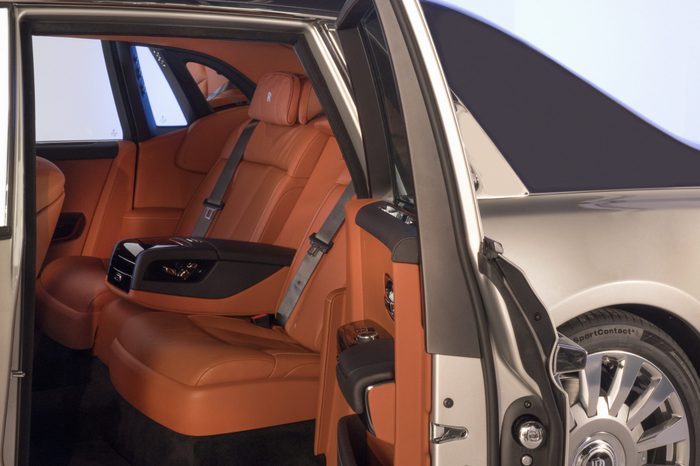
Rear-hinged doors
A popular feature on luxury cars up until the 60s, the rear-hinged door allowed a more graceful entrance and exit for rear-seat passengers. Unfortunately, these doors were often less safe since they would open up rather easily in an accident or into traffic, leading the door style to be termed “suicide doors.”
Another danger to anyone opening a door, rear-hinged or otherwise, is the danger to pedestrians or bicyclists. If you frequently park in an urban area, it might be a good idea to learn the “Dutch reach” to help protect your fellow humans.
One newer car with rear-hinged doors was released on a limited basis recently—the 2019 Lincoln Continental with “Coach Doors” was a refined take on the traditional suicide door, with a much safer latching mechanism.
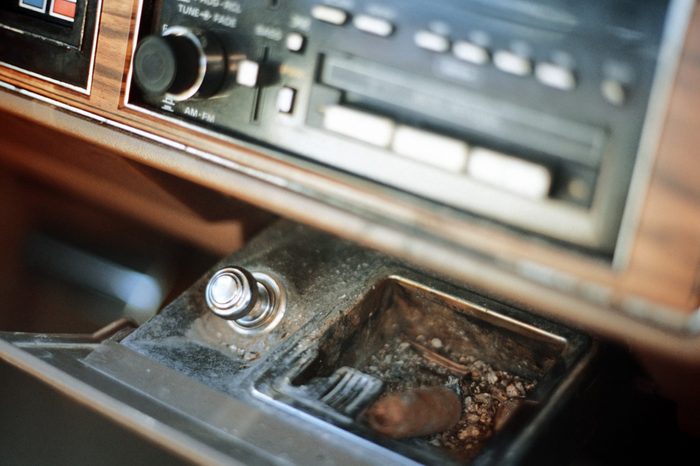
Ashtrays and cigarette lighters
There was a time, not too long ago, when smoking in nearly any public or private place was accepted as a way of life. As such, nearly every car was equipped with ashtrays and cigarette lighters to accommodate smoking while driving.
As people became more conscious of the health effects of smoking, fewer cars were equipped with ashtrays. Most cigarette lighter outlets no longer come standard with the traditional push-button lighter, as they now function as 12-volt power outlets for myriad electronic devices that are plugged into cars. Smokers can usually still be accommodated, however, with an optional “smokers’ package” that includes a lighter and an ashtray that fits into a cupholder. These 23 car gadgets will make driving safer.
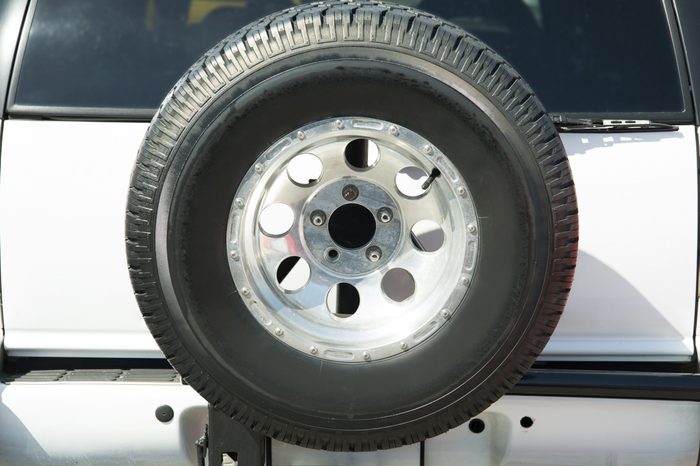
Spare tires
When’s the last time you had a flat tire? It’s not that common these days, and more and more cars are being fitted with run-flat tires that can be driven without air for several miles. This, and the ever-marching quest to improve fuel economy (a spare tire adds weight, which is the enemy of efficiency) has led many cars to replace spare tires with a can of tire sealant and a small air compressor.
It still pays to know how to change a tire, even if you don’t have a spare in your car. It’s one of 34 life skills everyone needs to be a grownup.
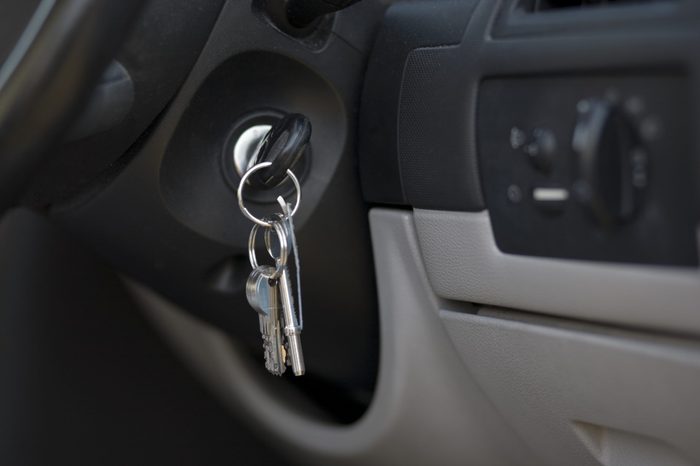
Keys
They haven’t disappeared altogether—entry-level cars still often have a traditional key, and cars destined for car rental agencies often have traditional keys since they’re harder for careless renters to lose—but most new cars have the option of a proximity key, which allow a car to be unlocked, started, and driven all without physically taking the key out of your pocket or bag. They use radio signals to digitally unlock the car.
One drawback to these proximity keys is thieves walking through your neighborhood might be able to get into your car, too, since the key is usually right inside your house. There are a few strategies to help prevent this kind of theft.
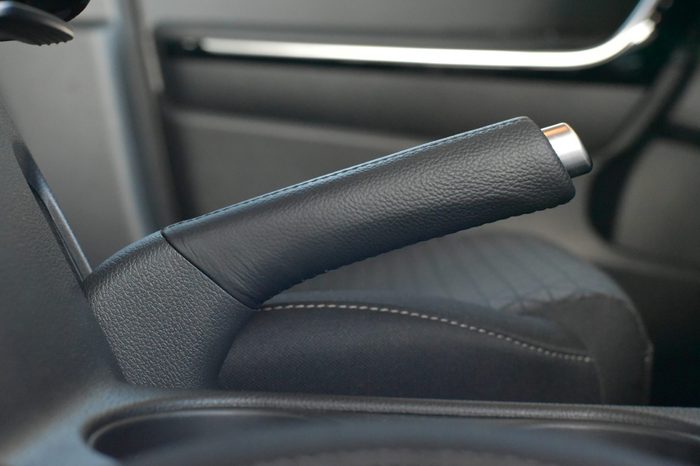
Parking brake handles
Often referred to as emergency brakes since they will usually still work should the regular floor brakes fail, the traditional parking brake pull-up lever is disappearing from most new cars, to be replaced with an electronic parking brake that activates with a push of a button. The push-button is much easier to package for automotive engineers, leaving (among other things) more interior room for cupholders, places to set and charge a cellphone or one of these 13 weird car features you didn’t know you might have.
One nice thing about electronic parking brakes? They can often be programmed to automatically engage when parking—which saves wear and tear on the transmission when parking on hills, since the weight of the car won’t be borne solely by that transmission.
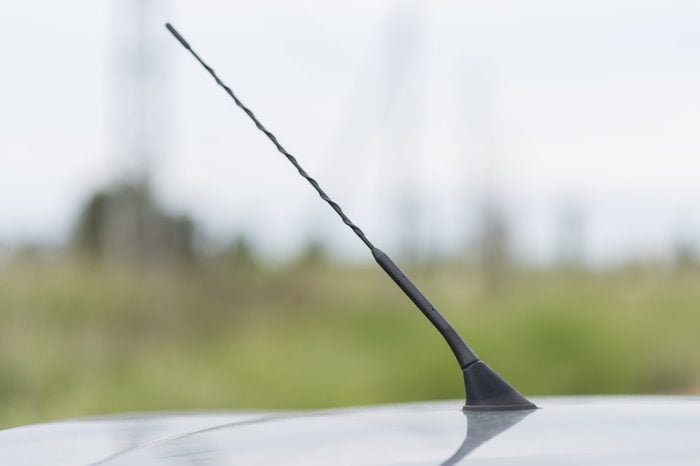
Power antennas
Power antennas were one of the least-reliable features on a car. They always seem to break—especially in colder climates where they are likely to be frozen shut by snow and ice. Power antennas were a feature that was necessary when pulling in distant radio stations was a priority. With modern digital broadcasting, as well as satellite radio, the tall antenna is often replaced by a small plastic “shark-fin” antenna on the roof of the car or even a wire embedded into the windshield glass. This improves both radio reception and aerodynamics.
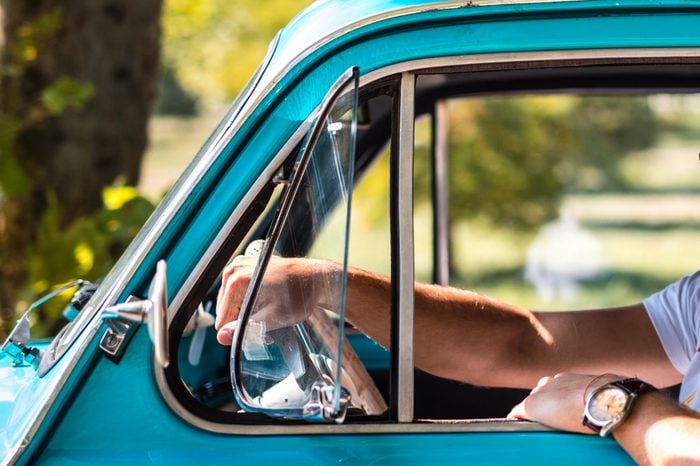
Vent windows
Before air conditioning was standard, the only way to drive on a hot day was with lowered windows. On many older cars, there was a second window on the front doors near the side mirror that would rotate open or closed, allowing fresh air to be directed right at the driver’s or passenger’s face. Even with the other windows closed, a bit of cool fresh air on the face makes driving so much better.
One other nice thing about vent windows was the ease of getting inside the car should you have locked the keys inside. While modern proximity keys make this less likely, here are three ways you can try and get inside your car should you be so unlucky.

Pop-up headlamps
We can blame the government and car stylists somewhat equally for the rise of pop-up headlamps. For many years, the U.S. government mandated that cars have only certain sizes and shapes of headlamps. As stylists and engineers tried to make the front ends of cars lower for better aerodynamics and cooler looks, the headlamps needed to go—so they were hidden away until needed at night.
Government regulations on headlight design were relaxed in the ’90s, and technology advanced to allow smaller bulbs. Safety has claimed the pop-up headlamp as well—those protruding lamps can be very dangerous to pedestrians and bicyclists. See if you can name these 12 car dashboard lights.
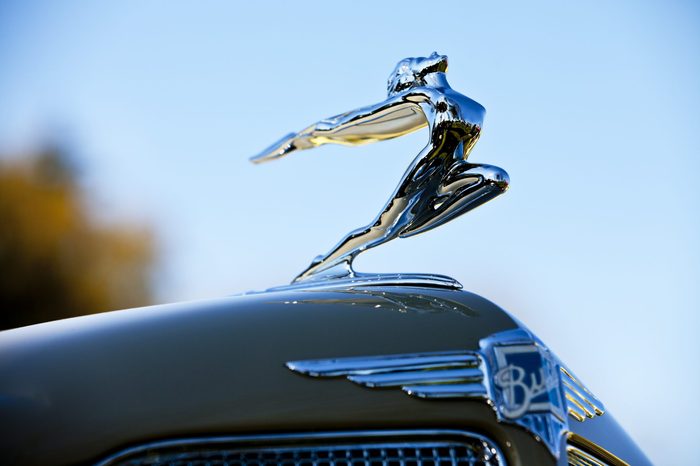
Hood ornaments
A few very expensive luxury cars may still have chrome stand-up hood ornaments, but safety regulations have dictated many changes since these protruding symbols can cause additional injury to pedestrians or cyclists. Some cars still equipped with the ornaments have an automatic retracting mechanism that pulls the ornament back under the hood at the first sense of impact.
Fun fact—hood ornaments were once somewhat functional. On cars built before World War II (and for some cars built shortly thereafter) most cars had an exposed radiator to cool the engine. The hood ornament was mounted on the radiator cap.
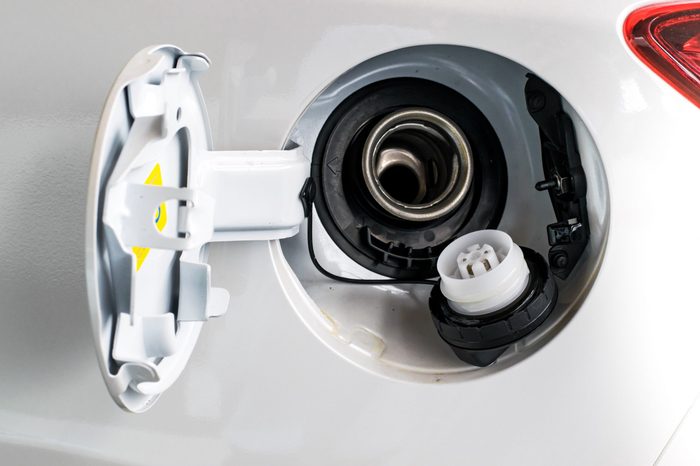
Gas caps
In the future when you pull up to the pump, you may not have a gas cap to unscrew. Ford, for one, started doing away with them after introducing the Easy Fuel feature in 2011. The capless fuel feature helps prevent gas siphoning and has the side benefit of saving you the hassle of unscrewing and screwing the gas cap, a big bonus in the winter when your hands would get cold. Plus, with no gas cap, there’s one less car accessory for you to lose. Gas cap or no, you’ll want to avoid making these 12 potentially dangerous mistakes at the pump.
